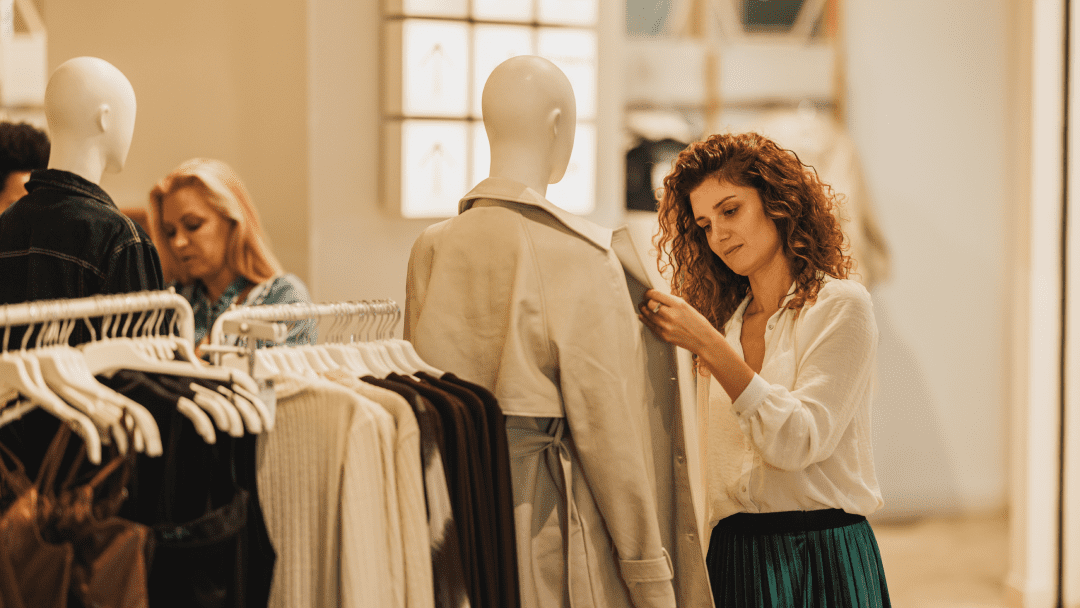In the ever-evolving world of clothing manufacturer in singapore, the role of effective merchandising strategies cannot be overstated. Just as a skilled conductor leads an orchestra to create harmonious music, successful garment manufacturers orchestrate their operations with precision, from design and production to marketing and distribution.
In this comprehensive guide, we delve into the realm of merchandising strategies and tactics, unveiling the secrets employed by industry leaders to achieve excellence in the garment manufacturing landscape.
Chapter 1: The Art and Science of Garment Merchandising
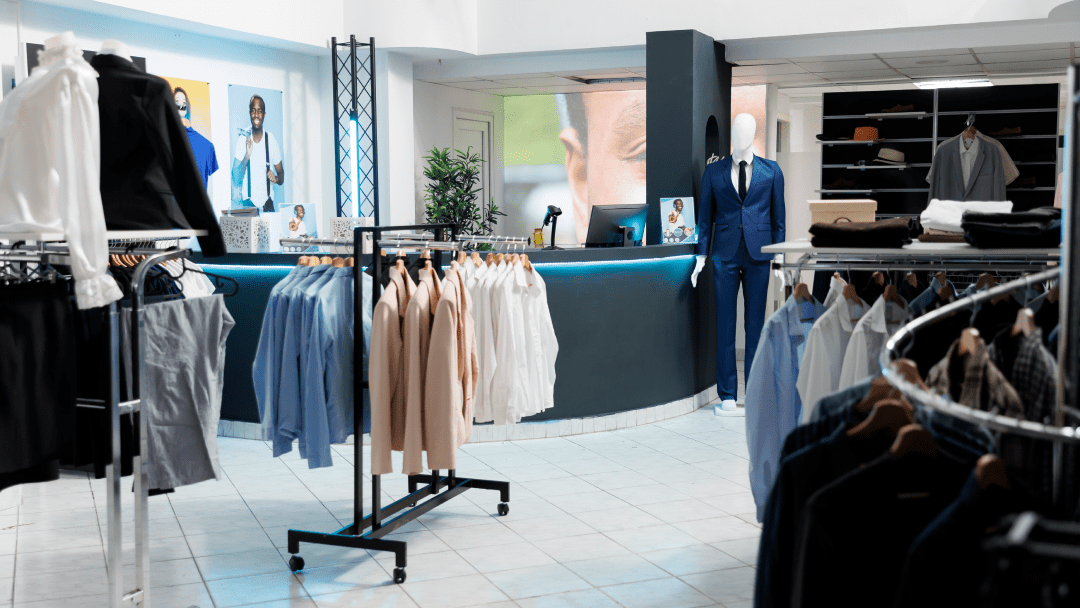
The role of effective merchandising always stands as the cornerstone of success. As we embark on this journey to unlock the power of merchandising, we commence with the foundational chapter: “The Art and Science of Garment Merchandising.”
A. Understanding Garment Merchandising
At the heart of successful garment merchandising lies a deep comprehension of its fundamental concepts and principles. It is akin to deciphering the intricate strokes of a masterpiece, where each element plays a crucial role in the creation of a harmonious whole.
Garment merchandising transcends the mere transaction of clothing; it is a complex dance of aesthetics, logistics, and consumer psychology. In this chapter, we will embark on a journey to unravel the intricacies that underpin successful merchandising in the garment manufacturing industry.
First and foremost, understanding garment merchandising entails grasping the nuances of consumer behavior and market trends. It involves dissecting the ever-changing landscape of fashion trends to discern patterns and preferences. It requires an adept understanding of not only what consumers desire today but also anticipating their future aspirations.
Moreover, garment merchandising encompasses the art of storytelling through clothing. Every garment tells a story—of its design, craftsmanship, and the values it represents. It is the role of the merchandiser to ensure that this narrative resonates with the target audience, forging a profound connection that transcends the tangible.
We will delve into the multifaceted dimensions of garment merchandising, exploring the intricate interplay between design, production, and marketing. This chapter will lay the foundation for the journey ahead, equipping you with the knowledge and insights necessary to navigate the complex terrain of the fashion industry with finesse and precision.
B. The Merchandiser’s Role
As we embark on this exploration of garment merchandising, it is essential to recognize the pivotal role that merchandisers play in the fashion trends ecosystem. Merchandisers are the conductors of the fashion trends orchestra, orchestrating every note to create a harmonious symphony.
The responsibilities of a merchandiser are multifaceted and encompass a spectrum of roles that are integral to the entire manufacturing process. They are the visionaries who bridge the gap between creative design concepts and practical production realities.
A merchandiser is not merely a facilitator but a strategic thinker, a trendsetter, and a problem solver. They are tasked with translating creative visions into actionable plans, ensuring that designs are not only aesthetically pleasing but also feasible for production.
One of the most crucial roles of a merchandiser is to serve as the voice of the market. They are the conduits through which consumer preferences, market trends, and competitive insights flow into the design and production processes. Merchandisers must possess an acute understanding of the target audience, adapting strategies to align with evolving consumer behaviors.
Furthermore, merchandisers are guardians of quality and brand integrity. They oversee the production process with meticulous attention to detail, ensuring that garments meet or exceed the highest standards of quality. In a world where ethical considerations and sustainability are paramount, merchandisers also play a pivotal role in ensuring that garments are produced with ethical practices and sustainable materials.
Chapter 2: Navigating Market Trends

In the ever-evolving landscape of fashion, staying ahead of the curve is not just a desire—it’s a necessity for those aspiring to achieve dominance. Within the pages of this chapter, we embark on a journey through the dynamic realm of market trends, a terrain where understanding the intricate patterns and currents can be the difference between thriving and merely surviving.
A. Market Research and Trend Analysis
Imagine having a crystal ball that could reveal the future of fashion. While we may not possess such mystical powers, effective market research and trend analysis are the closest tools we have. In the context of garment manufacturing, especially in the vibrant setting of clothing manufacturer in singapore these tools serve as your navigational compass. You’ll learn how to conduct comprehensive market research, dissecting not only the present market landscape but also peering into the horizon of emerging trends.
In the fast-paced world of fashion, knowing what’s on the horizon is akin to holding the keys to a treasure chest. Unveiling the intricacies of market research and trend analysis, we empower you to decipher the signals that guide your decision-making, ensuring your garment manufacturing venture aligns seamlessly with consumer desires and industry evolution.
B Consumer Insights
In the midst of the fashion maelstrom, consumers are the ultimate arbiters of trends. Their preferences, behaviors, and ever-evolving tastes dictate the course of the industry. Understanding consumers on a profound level is the holy grail of fashion dominance. As we navigate the realm of consumer insights, clothing manufacturer in singapore takes on a distinct relevance. We not only explore consumer behaviors and preferences in the broader fashion trends landscape but also zoom in on the unique characteristics of the Singaporean market.
From cultural influences to seasonal shifts, we dissect the intricacies that set Singapore apart and how they influence consumer choices. This chapter serves as a beacon, guiding you through the labyrinth of market trends and consumer insights, ensuring that your garment manufacturing endeavors in Singapore are finely attuned to the pulse of the market.
It’s a reminder that while the principles of market research and consumer insights are universal, their application in the context of Singapore’s clothing manufacturing landscape requires a nuanced understanding. It’s this synergy between global trends and local intricacies that paves your path to fashion dominance in the vibrant hub of clothing manufacturing that is Singapore.
Chapter 3: Crafting Winning Designs

Design is the very essence—the thread that weaves together creativity, aesthetics, and functionality. The success of a garment often hinges on its design, making Chapter 3 a pivotal point in your journey to fashion dominance. Here, we delve deep into the world of design, exploring not only its artistic facets but also its practical implications.
A. Design Development
Design development is akin to shaping raw clay into a masterpiece—it’s the process that breathes life into creative concepts. In this section, we venture into the intricacies of design development, unwrapping the journey from a mere idea to a tangible, marketable garment. We explore how design concepts evolve and mature, laying the foundation for a successful garment line.
For those embarking on clothing manufacturer in singapore, clothing manufacturer in singapore serve as a reminder of the unique context in which design development takes place. We delve into the local influences and global inspirations that shape design choices, ensuring that your creations resonate with both local and international audiences.
B. Collaborating with Designers
In the collaborative symphony of garment creation, designers are the composers of the melody. Their creative visions breathe life into your manufacturing process. In this section, we illuminate the art of effective collaboration with designers, highlighting the delicate balance between creativity and feasibility. Collaborating with designers is a dance of ideas and practicality, and mastering this dance is paramount.
As we explore this facet of garment merchandising, we consider the implications of clothing manufacturer in singapore. Singapore’s vibrant fashion scene is enriched by a diverse pool of talented designers, each with their unique styles and perspectives. We offer insights into how to harness this creative energy effectively while ensuring that design choices align with the practicalities of manufacturing.
Whether you’re an aspiring entrepreneur or an established player in clothing manufacturer in singapore, these insights are designed to elevate your understanding of design development and collaboration with designers, positioning you for success in the dynamic landscape of fashion dominance.
Chapter 4: Supplier Selection and Management
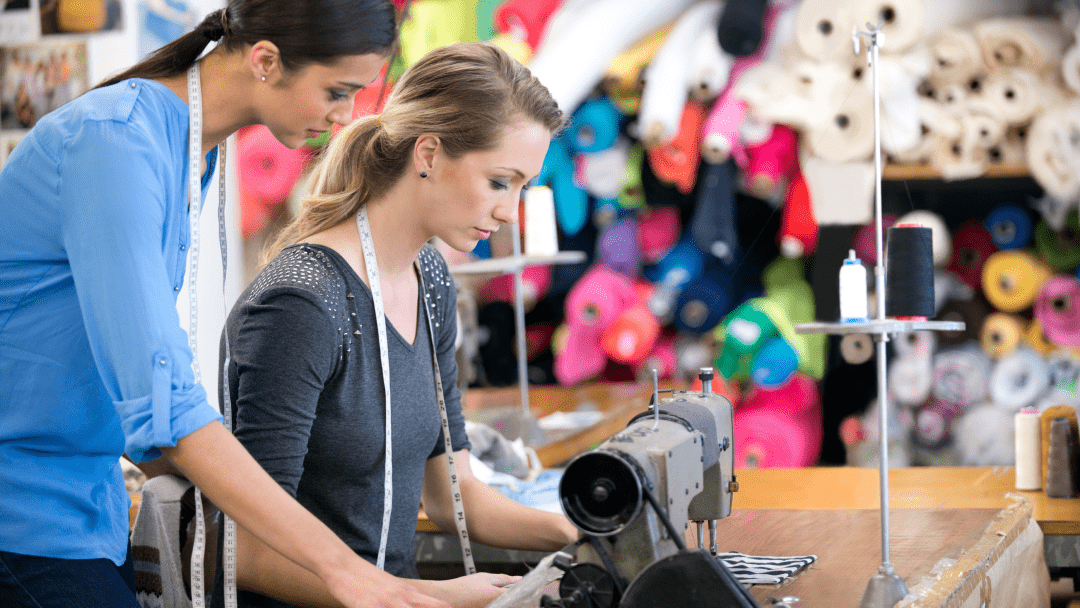
Suppliers are the critical threads that hold the fabric together. Chapter 4 delves into the pivotal aspects of supplier selection and management, highlighting their indispensable role in your journey to fashion dominance. We embark on a comprehensive exploration of how to choose the right partners and cultivate mutually beneficial relationships, ensuring the seamless flow of operations.
A. Selecting Reliable Suppliers
The choice of suppliers is not merely a decision; it’s a strategic partnership that can shape the destiny of your garment manufacturing venture. In this section, we embark on a deep dive into the art of selecting reliable suppliers. We unveil the criteria and considerations that should guide your choices, aligning them with your brand’s vision, quality standards, and ethical practices.
For those venturing into clothing manufacturer in singapore, clothing manufacturers in Singapore take on a specific significance. We illuminate the unique landscape of suppliers in Singapore, from textile providers to manufacturers, offering insights into how to navigate this terrain effectively. We explore the local and global factors that influence supplier choices, ensuring that your selections resonate with the dynamic context of Singapore’s garment manufacturing industry.
B. Supplier Relationship Management
Beyond the initial selection, the art of supplier relationship management is a continuous journey. Just as a harmonious melody requires a skilled conductor, nurturing strong and productive relationships with suppliers is essential for the seamless orchestration of your manufacturing operations. In this section, we uncover the strategies and best practices for supplier relationship management, emphasizing the importance of transparent communication, trust-building, and collaboration.
A clothing manufacturer in Singapore guides us through this exploration, highlighting the collaborative spirit that defines Singapore’s garment manufacturing landscape. We delve into the cultural nuances and business dynamics that shape supplier relationships in Singapore, ensuring that your approach to supplier management is finely attuned to the local ethos.
Clothing manufacturer in singapore serve as a compass, anchoring your understanding of supplier selection and management in the specific context of Singapore’s garment manufacturing industry. Whether you’re a seasoned professional or an aspiring entrepreneur, the insights in this chapter equip you with the knowledge and strategies to choose the right suppliers and nurture enduring partnerships.
Chapter 5: Quality Control and Assurance
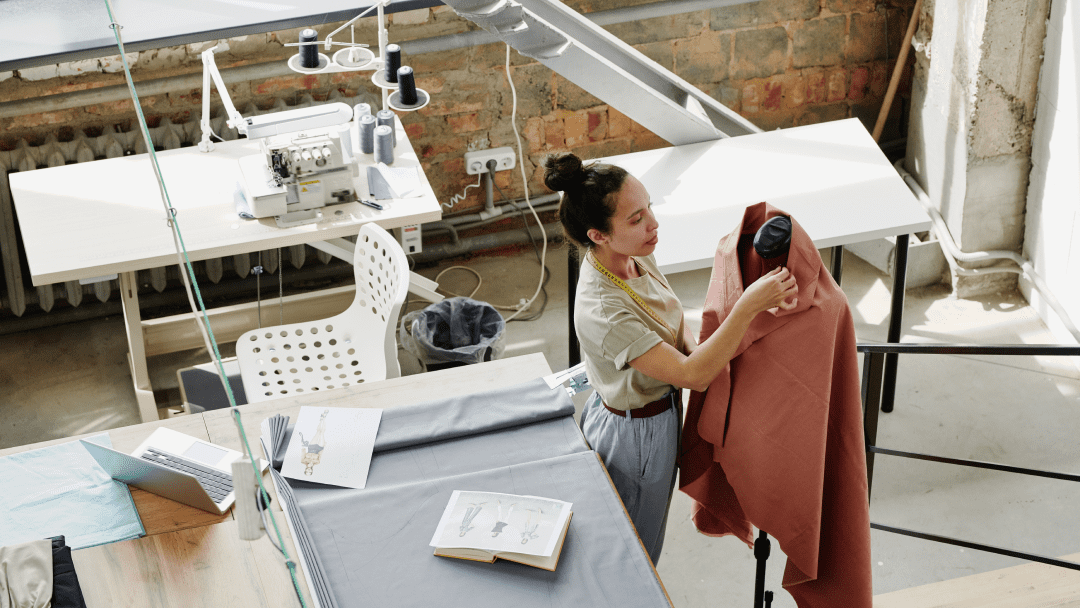
In the world of fashion, quality is the linchpin that separates the extraordinary from the ordinary. Chapter 5, dedicated to quality control and assurance, is your guide to elevating your garments to impeccable standards. We navigate the meticulous processes and ethical considerations that ensure your garments not only meet industry standards but also uphold the values of sustainability and fairness.
A. Quality Control Protocols
The pursuit of quality is an ongoing journey, one that permeates every stage of garment production. In this section, we unveil the importance of implementing robust quality control protocols at every juncture of the manufacturing process. Quality control is not just about meeting industry standards; it’s about exceeding them. We delve into the intricacies of setting up and enforcing stringent quality control measures, from the selection of materials to the final inspection of finished garments.
B. Ensuring Ethical Production
Beyond quality, the ethical foundation of production sets the stage for sustainable success. This section explores the imperative of embracing ethical manufacturing practices, fair labor standards, and sustainable production methods. The fashion industry is increasingly scrutinized for its ethical footprint, and your commitment to ethical production is not just a choice—it’s an expectation.
As we navigate the terrain of ethical production, clothing manufacturer in singapore guides us toward a deeper understanding of how ethics intersect with the local context. Singapore, known for its commitment to sustainable practices, offers a fertile ground for ethical garment manufacturing. We shed light on how to align your production with Singapore’s ethical ethos while meeting global sustainability standards.
Chapter 6: Branding and Marketing Strategies
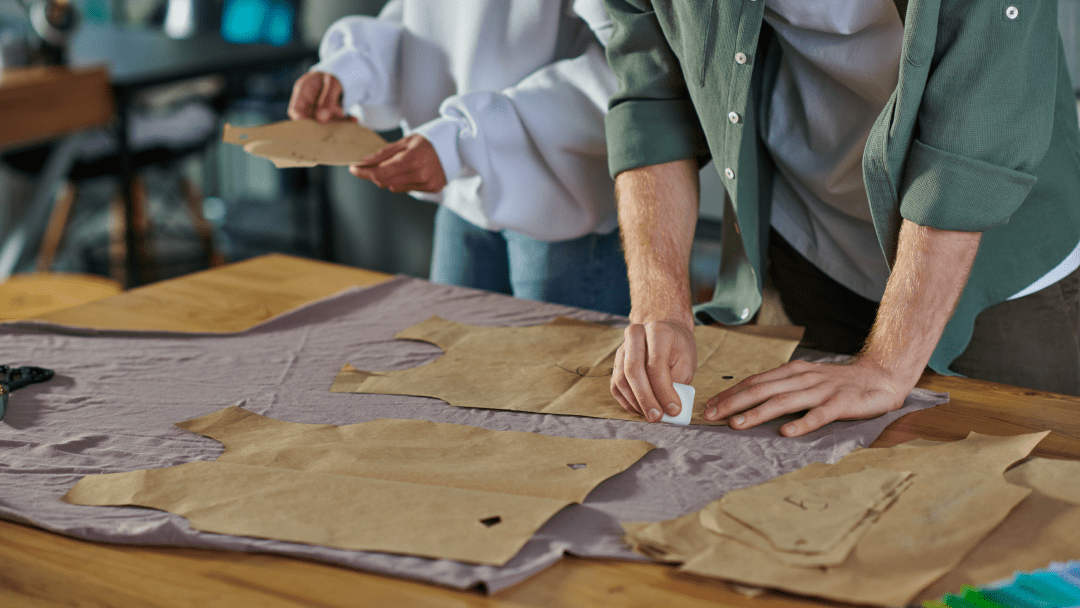
Branding and marketing are the twin engines that propel your garment manufacturing venture to new heights. Chapter 6 is a pivotal juncture in your journey to fashion dominance, where we delve into the art and science of crafting a compelling brand identity and deploying effective marketing strategies.
A. Building a Brand Identity
Your brand is more than just a name; it’s an identity that encapsulates your vision, values, and aspirations. In this section, we unveil the critical steps to craft a distinctive brand identity that resonates with your target audience and sets your garments apart in a crowded marketplace. Building a brand identity isn’t just about designing a logo or choosing a color palette—it’s about telling a compelling story that captures the essence of your garments.
For those engaged in clothing manufacturer in singapore, Clothing manufacturer in singapore assumes particular significance. We explore how the local landscape and global trends intersect to shape brand identities within this dynamic hub. We offer insights into the cultural nuances and consumer preferences that influence brand perception, ensuring that your brand identity aligns seamlessly with the unique blend of influences that define clothing manufacturer in singapore.
B. Marketing Tactics
A well-crafted brand identity needs a stage on which to shine, and marketing provides that stage. In this section, we take a deep dive into effective marketing tactics to promote your garment line. We explore a range of strategies, from content marketing that educates and engages your audience to leveraging the power of social media to reach wider demographics. Influencer partnerships, an increasingly influential channel in the fashion industry, are also examined in detail.
This chapter, clothing manufacturer in singapore, underscores the symbiotic relationship between brand identity and marketing within the context of garment manufacturing. Whether you’re an established player or a budding entrepreneur, the insights within these pages empower you to create a brand identity that captivates and to deploy marketing tactics that resonate. These skills are not just tools in your arsenal; they are the keys to fashion dominance in a landscape where brand perception and marketing prowess often dictate success.
Chapter 7: Distribution Channels and Market Expansion
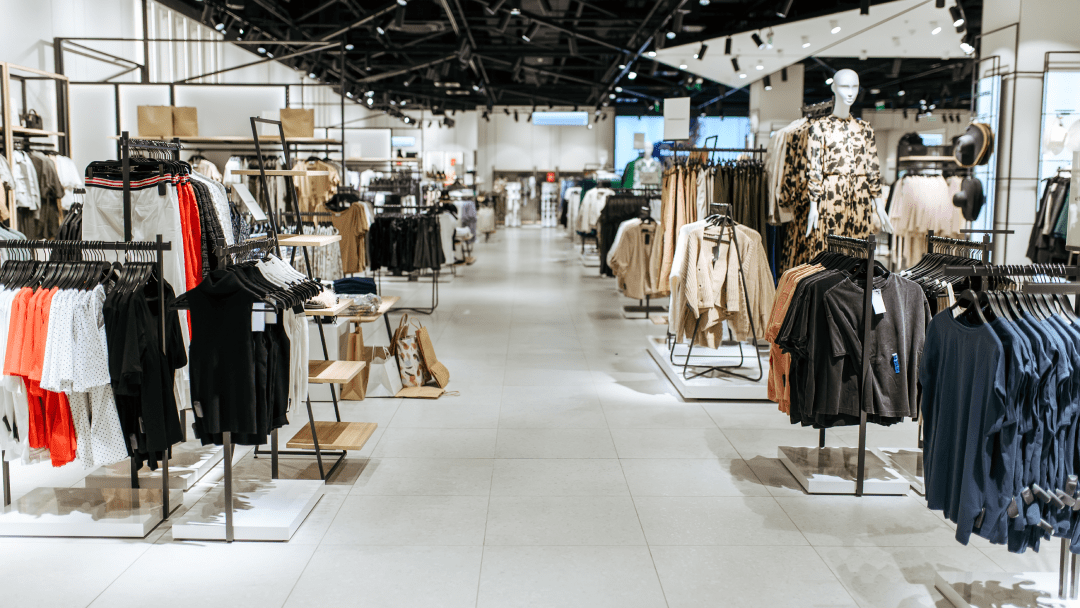
Staying ahead of the competition requires not only designing captivating garments but also mastering the art of effective distribution and market expansion. In this chapter, we will explore the critical role of distribution strategies and market expansion in achieving fashion dominance as clothing manufacturer leader in singapore . From understanding various distribution channels to expanding your market reach across borders, we will unveil the keys to success in this dynamic field.
- Distribution Strategies
Effective distribution is the lifeline of any fashion brand. It involves getting your products into the hands of consumers in the most efficient and convenient manner possible. To unlock the power of merchandising, it’s essential to understand and optimize various distribution channels available in today’s market.
- E-commerce
The rise of e-commerce has revolutionized the fashion industry. Online sales platforms provide brands with a global reach, enabling them to connect with customers worldwide. E-commerce offers the convenience of 24/7 shopping, personalized recommendations, and easy access to a vast array of products.
To harness the potential of e-commerce, fashion brands must invest in user-friendly websites, mobile apps, and secure payment gateways. A seamless online shopping experience, coupled with effective digital marketing, can significantly enhance a brand’s visibility and sales.
- Brick-and-Mortar Stores
Traditional brick-and-mortar stores still hold a special place in the fashion trends industry. These physical retail spaces allow customers to touch, feel, and try on garments, creating a tactile shopping experience. Successful merchandising involves strategically choosing the right locations and store layouts to attract foot traffic and maximize sales.
Many fashion brands adopt an omnichannel approach, combining both online and physical stores to cater to different customer preferences. This approach enhances brand visibility and provides customers with multiple ways to engage with the brand.
- Pop-Up Shops
Pop-up shops offer a temporary physical presence in high-traffic areas, such as shopping malls or event venues. They create a sense of urgency and exclusivity, driving customer engagement. Merchandisers can strategically use pop-up shops to introduce new collections or test the waters in new markets.
- Wholesale and Retail Partnerships
Collaborating with established retailers or entering into wholesale agreements can rapidly expand a brand’s distribution network. This approach allows fashion brands to leverage the existing customer base of retailers, gaining access to a wider audience. Effective negotiations and strong partnerships are key to success in this distribution channel.
- Expanding Your Market Reach
Expanding your market reach is a pivotal strategy for achieving fashion trends dominance. In a globalized world, fashion brands can no longer afford to be confined to their home markets.
- International Distribution
Venturing into international markets can be both rewarding and challenging. It requires a deep understanding of local cultures, consumer preferences, and market dynamics. Successful international distribution involves conducting thorough market research, adapting products to local tastes, and establishing reliable distribution networks.
- Exports
Exporting your fashion products to foreign markets is an effective way to expand your brand’s footprint. It involves shipping products to international buyers or distributors. Merchandisers play a crucial role in ensuring that the export process runs smoothly, from managing logistics to complying with international trade regulations.
- Collaborative Partnerships
Partnering with international fashion brands or retailers can open doors to new markets. Collaborations can take various forms, such as co-branded collections or exclusive distribution agreements. These partnerships can introduce your brand to a broader audience while leveraging the partner’s existing infrastructure and customer base.
- Digital Marketing and E-commerce
In the age of digital connectivity, e-commerce transcends borders. Leveraging digital marketing strategies like search engine optimization (SEO), social media advertising, and influencer partnerships can help fashion brands reach global audiences. Multilingual websites and localized content are essential for engaging international customers effectively.
Chapter 8: Sustainable Practices in Garment Merchandising

In an era where environmental consciousness and ethical values are paramount, sustainability has become a cornerstone of success in the fashion industry. In this chapter, we will delve into the profound significance of sustainability in garment manufacturing and discover how integrating eco-friendly practices into your operations can unlock the power of merchandising.
From embracing sustainable fashion trends to practicing transparency and ethical sourcing, we will explore how to resonate with conscious consumers and pave the way to fashion dominance.
- Sustainability in Fashion: The fashion industry has witnessed a seismic shift towards sustainability in recent years. As consumers become increasingly aware of the environmental and social impacts of fashion, they demand more from the brands they support. Sustainability is no longer an optional feature but a fundamental requirement for success.
- Eco-Friendly Materials: One of the core aspects of sustainable merchandising is the choice of materials. Embracing eco-friendly fabrics and materials, such as organic cotton, recycled polyester, and sustainable alternatives like Tencel, can significantly reduce the ecological footprint of your garments. These materials are not only kinder to the environment but also resonate with eco-conscious consumers.
- Responsible Manufacturing: Sustainable practices extend beyond materials to the manufacturing process itself. Brands that prioritize responsible manufacturing, including ethical labor practices and reduced waste, are aligning themselves with the values of conscious consumers. This involves selecting manufacturing partners who adhere to fair labor standards and implementing efficient production processes.
- Circular Fashion: Circular fashion trends is a concept that aims to minimize waste by designing garments that can be recycled, upcycled, or repurposed. Fashion brands that embrace circular fashion trends are not only reducing their environmental impact but also contributing to a more sustainable future. Merchandisers play a crucial role in championing circular design principles within their organizations.
- Transparency and Ethical Sourcing: Transparency and ethical sourcing are essential components of sustainable fashion merchandising. Consumers today want to know the story behind the clothes they wear, from the sourcing of raw materials to the working conditions of those involved in production.
- Traceability: Merchandisers can work to establish supply chain traceability, enabling brands to track the journey of materials from their source to the finished product. Transparent supply chains build trust with consumers and demonstrate a commitment to responsible sourcing.
- Ethical Labor Practices: Ensuring ethical labor practices is non-negotiable in sustainable fashion. Merchandisers should collaborate with manufacturing partners that adhere to fair labor standards and provide safe working conditions for employees. Brands can communicate their commitment to ethical labor practices through certifications and transparent reporting.
- Sustainable Certifications: Many consumers look for sustainable certifications when making fashion purchases. Merchandisers can guide their brands to obtain certifications like Global Organic Textile Standard (GOTS), Fair Trade, or OEKO-TEX Standard 100, which validate sustainable and ethical practices.
- Consumer Education: Transparency in sustainable fashion trends extends to consumer education. Merchandisers can contribute to the brand’s efforts in informing consumers about the importance of sustainability in fashion. This educational approach not only fosters brand loyalty but also raises awareness about the broader impact of the fashion industry.
Chapter 9: Troubleshooting and Problem Solving

Success often comes hand in hand with challenges and unforeseen obstacles. The ability to troubleshoot and solve problems effectively is a crucial skill that can make or break a fashion brand’s journey to dominance. In this chapter, we will explore the common challenges faced by garment manufacturers and equip you with effective troubleshooting strategies. We will also delve into the importance of crisis management and how to develop plans that safeguard your brand’s reputation in the face of unexpected issues.
- Common Challenges: No journey to fashion dominance is without its fair share of challenges. Garment manufacturers encounter a multitude of issues that can impact everything from production timelines to product quality. Understanding these common challenges is the first step toward addressing them effectively.
- Supply Chain Disruptions: Supply chain disruptions, whether due to natural disasters, political instability, or unforeseen circumstances, can wreak havoc on production schedules. To troubleshoot this challenge, manufacturers can develop contingency plans, diversify suppliers, and maintain open communication to identify potential risks early.
- Quality Control Issues: Maintaining consistent product quality is a persistent challenge in the fashion industry. To address quality control issues, manufacturers should implement rigorous quality assurance processes, conduct regular inspections, and foster a culture of excellence within their teams.
- Production Delays: Production delays can result from a variety of factors, such as machinery breakdowns, labor shortages, or design modifications. Troubleshooting production delays requires meticulous planning, proactive problem-solving, and the flexibility to adapt to changing circumstances.
- Cost Overruns: Budget constraints and unexpected expenses can lead to cost overruns in garment manufacturing. To mitigate this challenge, manufacturers should conduct thorough cost analysis, negotiate favorable terms with suppliers, and maintain a cushion for unforeseen expenses.
- Market Fluctuations: Fashion trends and consumer preferences can change rapidly, causing market fluctuations. Troubleshooting market fluctuations involves staying attuned to consumer insights, conducting timely market research, and agile product development to meet evolving demands.
- Crisis Management: Crisis management is an essential aspect of maintaining a brand’s reputation and credibility in the face of unforeseen issues. While prevention is always preferable, having a well-thought-out crisis management plan is crucial for navigating crises when they arise.
- Risk Assessment: The first step in crisis management is identifying potential risks and vulnerabilities in your operations. This involves assessing supply chain risks, production vulnerabilities, and market dynamics that could impact your brand.
- Crisis Response Team: Establishing a crisis response team with designated roles and responsibilities is key to effective crisis management. This team should be well-trained and prepared to act swiftly when a crisis occurs.
- Communication Plan: An effective communication plan is critical in crisis management. Brands should have a strategy for transparently communicating with customers, stakeholders, and the public. Timely and honest communication can help mitigate damage to the brand’s reputation.
- Contingency Plans: Developing contingency plans for various crisis scenarios, such as supply chain disruptions, product recalls, or public relations crises, is essential. These plans should outline specific steps to be taken in response to each crisis.
- Continuous Improvement: After a crisis is resolved, it’s crucial to conduct a post-mortem analysis to identify lessons learned and areas for improvement. This continuous improvement process strengthens the brand’s crisis management capabilities.
Chapter 10: Future Trends and Innovation

Staying at the forefront of innovation and embracing future trends is essential for achieving and maintaining dominance in the industry. In this chapter, we will explore the transformative power of technology-driven innovation in the garment manufacturing landscape. We will delve into how technologies such as artificial intelligence (AI) and automation are reshaping the industry. Additionally, we will discuss the importance of adapting to future trends and innovations to solidify your brand’s position as an industry leader.
- Tech-Driven Innovation: The fashion industry has experienced a technological revolution in recent years, with cutting-edge innovations reshaping every aspect of garment manufacturing. These technological advancements have not only improved efficiency but have also opened up new possibilities for creativity and sustainability.
- Artificial Intelligence (AI): AI is a game-changer in the fashion industry. From designing patterns to predicting consumer trends, AI algorithms are capable of analyzing vast datasets and making decisions with remarkable accuracy. AI-driven design tools can assist designers in generating creative ideas and optimizing patterns for minimal waste. Moreover, AI-powered predictive analytics can help fashion brands anticipate consumer preferences and demand, allowing for more precise inventory management and reducing overproduction. This not only reduces costs but also minimizes the environmental impact of fashion trends production.
- Automation: Automation is revolutionizing the manufacturing process in garment merchandising. Automated cutting machines, sewing robots, and smart factories are streamlining production, improving precision, and reducing labor costs. This shift towards automation not only enhances productivity but also minimizes errors, resulting in higher-quality products. Automation also plays a significant role in sustainability. By optimizing material usage and reducing energy consumption, automated processes contribute to eco-friendly and efficient manufacturing.
- Adapting to Future Trends: Staying ahead of emerging trends and innovations is a key component of fashion dominance. Here are some strategies to ensure your brand remains at the forefront of the industry:
- Market Research: Continuous market research is essential for identifying emerging trends and consumer preferences. Stay attuned to changing demographics, cultural shifts, and economic developments that could impact fashion trends choices. Invest in data analytics and consumer insights to gain a deeper understanding of your target audience.
- Sustainability Initiatives: Sustainability is not just a trend; it’s a fundamental shift in consumer values. Embrace sustainable practices, from eco-friendly materials to responsible manufacturing, and communicate your commitment to sustainability to resonate with conscious consumers.
- Innovation Culture: Foster an innovation culture within your organization. Encourage employees to experiment with new ideas and technologies. Create an environment where innovation is rewarded and failure is seen as a valuable learning experience.
- Collaboration: Collaborate with technology providers, startups, and industry innovators to access cutting-edge solutions. Partnerships can provide your brand with access to the latest innovations and help you stay ahead of the competition.
- Agility and Adaptability: In the fast-paced fashion industry, agility and adaptability are key. Be prepared to pivot and adjust your strategies in response to changing market conditions or unforeseen challenges. The ability to quickly embrace new trends and technologies can set your brand apart.
The future of fashion merchandising is a landscape shaped by technology-driven innovation and the ability to adapt to emerging trends. AI and automation are transforming the manufacturing process, improving efficiency, sustainability, and product quality. Brands that embrace these technologies are positioning themselves for long-term success.
Moreover, staying ahead of future trends and innovations is essential for fashion dominance. Market research, sustainability initiatives, an innovation culture, collaboration, and agility are all integral to ensuring your brand remains at the forefront of the industry.
As you continue your journey to fashion dominance, remember that innovation is not a destination but a continuous process. By harnessing the power of technology and staying agile in response to changing trends, your brand can lead the way in shaping the future of fashion merchandising. In this dynamic industry, the path to dominance is paved with innovation and the foresight to embrace what lies ahead.
OL Garments: Your Gateway to Private Label Success

Creating your own brand can be a dream come true. Imagine seeing your designs on the racks, worn by fashion-forward individuals, and making a mark in the industry. OL Garments is here to make that dream a reality for you. With a strong legacy and a commitment to quality, OL Garments is the perfect partner to kickstart your private label journey.
A. About OL Garments
OL Garments is not just another clothing manufacturer in singapore; it’s a trusted name in the fashion industry. With decades of experience and a track record of excellence, OL Garments has earned a reputation for delivering top-notch quality garments. From sourcing the finest materials to employing skilled artisans, every step in the production process reflects our dedication to excellence.
B. Why Choose OL Garments for Your Private Label Business?
Quality Assurance: When you partner with OL Garments, you can rest assured that your private label products will meet the highest standards of quality. Our stringent quality control measures ensure that every garment leaving our facility is flawless.
- Customization: We understand that your brand is unique, and we offer a high degree of customization to reflect your vision. From fabric selection to design details, you have the freedom to create garments that truly represent your brand identity.
- Efficiency: Time is of the essence in the fashion industry. At OL Garments, we understand the importance of swift turnaround times. Our state-of-the-art machinery and highly skilled workforce enable us to deliver your orders with exceptional efficiency. In fact, our speed sets us apart from the competition. Our sampling process can be completed within just 1 month, while production is typically finalized in a mere 2 months. We know that time is money in fashion, and we’re committed to helping you stay ahead of the game.
- Cost-Effective: We offer competitive pricing without compromising on quality. Our commitment to providing cost-effective solutions means that you can enter the private label market without worrying about breaking the bank. One key advantage we offer is a lower Minimum Order Quantity (MOQ) compared to our competitors. With OL Garments, your MOQ is set at just 300 pieces, making it easier than ever to get your brand off the ground while managing your budget effectively.
- Sustainability: OL Garments is committed to sustainability. We offer eco-friendly materials and production processes, allowing you to align your brand with the growing demand for sustainable fashion.
C. The Private Label Experience with OL Garments
Starting your private label business with OL Garments is a seamless and rewarding journey. Here’s what you can expect:
- Consultation: We begin by understanding your brand’s vision and requirements. Our team of experts will guide you through the process, offering insights and recommendations to help you make informed decisions.
- Design and Development: Once we have a clear understanding of your needs, our design and development team will work closely with you to bring your ideas to life. From sketches to prototypes, we ensure that every detail aligns with your brand’s identity.
- Production: Our state-of-the-art manufacturing facility takes over, turning your designs into reality. Our skilled craftsmen and cutting-edge machinery guarantee the production of high-quality garments.
- Quality Control: Quality is non-negotiable at OL Garments. Every garment undergoes rigorous quality control checks to ensure it meets our exacting standards.
- Packaging and Delivery: Your private label products are carefully packaged and prepared for delivery. Whether you’re selling online or in physical stores, we ensure your orders are ready for the market.
- Ongoing Support: Our partnership doesn’t end with delivery. We provide ongoing support, assisting with reorders, addressing any concerns, and helping you adapt to market trends.
Your dream of launching a private label fashion brand is within reach, and OL Garments is your trusted partner on this exciting journey. With a legacy of quality, customization, and sustainability, we provide the foundation for your brand’s success. Don’t wait any longer; take the first step towards fashion dominance with OL Garments by your side. Your brand, our expertise – together, we’ll create something remarkable.
